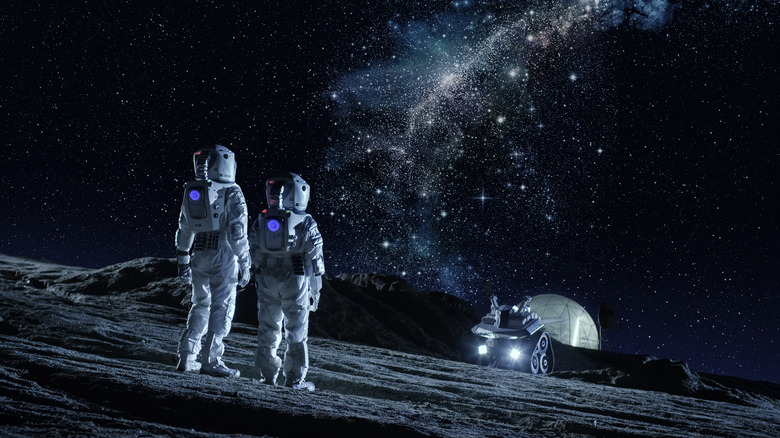How Much Would It Cost To Actually Live In Space?
Life in space isn't just reserved for astronauts, it's quite plausible for regular public citizens too, as long as they have at least eight figures in the bank, that is. It's no surprise that living in space costs a pretty penny, considering the price of baggage alone can already reach millions of dollars. SpaceX is charging $4.57 million to carry payloads of up to 1,830 pounds. If you want to take all the comforts of home with you, however, United Launch Alliance is offering to bring up to 41,750 pounds worth of cargo to space for a whopping $109 million.
Sure, civilian astronauts could reduce costs by simply traveling light, but that doesn't exactly make travel expenses any cheaper. For starters, Virgin Galactic previously charged $250,000 per head, and that's just for traveling to the edge of space, not actually living beyond those borders, not to mention that pricing was only limited to the first batch of tickets as well — the price is now closer to $450,000. For those who want to travel to space and actually live there for long, well, it gets a lot more expensive than that.
The price of living on a space station is steep
NASA did allow regular tourists to not only fly to space but also live onboard the International Space Station for several nights if they could afford it. In 2001, Dennis Tito, the first-ever self-funded tourist in space, spent $20 million for his rocket flight and eight-day stay on the ISS, per Fox. A lot has changed since then, so when NASA announced in 2019 that it will be allowing tourists on the ISS, it revealed that a single night would amount to $35,000 per person. That doesn't include any complimentary breakfast or bar drinks either, as NASA will reportedly be charging for basic amenities such as storage, communication, and even food, according to Reuters.
Of course, that's just the cost of staying on the ISS, getting there would mean paying a jaw-dropping $50 million per seat for the rocket ride itself, on top of all the other additional expenses you might accrue during your stay. Furthermore, only two private trips to the ISS a year will be allowed, with each lasting for only 30 days. That said, hopeful space tourists will likely be planning years ahead for a trip unless they prefer outbidding each other for the extremely-limited slots available.
Is the cost of living on the moon any better?
The moon is perfect for aspiring spacefarers who prefer living on an actual rocky surface instead of being behind the cold, metallic walls of a space station. On the other hand, the Moon is — at the moment — nowhere near as hospitable as Earth, making its cost of living quite massive in comparison. Living in its hostile environment would require a state-of-the-art shelter and transportation for food and water. It'd also require facilitating oxygen and energy. According to NASA's reckoning back in 2014, sending just a single pound to the moon already cost $1.3 million. The price of a "moon taxi" using NASA's own rockets would cost an estimated $2 billion.
Renting a 110 cubic-meter six-person space module would cost $456 million per year, while the annual cost of staying in NASA's swanky four-person lunar base would have a significantly higher cost at $7.3 billion. Yearly expenses for food could go as high as $5.9 billion, with annual water bills capable of reaching an eye-watering $43 billion. Overall, the total cost of living on the moon, including a fortified shelter, food, water, and an allotment of 100 GB/mo of internet data, would be about $57.8 billion, according to NASA.


